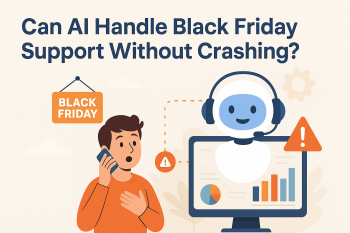Introduction
In today’s competitive e-commerce market, relying on guesswork is no longer an option. Predictive analysis has emerged as a game-changer, helping businesses anticipate customer needs and boost sales. By leveraging data insights, you can deliver personalized experiences, optimize marketing efforts, and improve decision-making.
This article explores how predictive analysis is reshaping e-commerce and why it’s a must-have for growth.
What is Predictive Analysis in E-commerce?
Predictive analysis involves using historical data, machine learning, and AI to predict future trends and behaviors. In e-commerce, it focuses on understanding customer preferences and improving operational efficiency.
Key Components of Predictive Analysis
1. Data Collection: Gathering information from multiple sources like website analytics, social media, and purchase history.
2. Data Modeling: Using algorithms to identify patterns and predict outcomes.
3. Insights Generation: Delivering actionable insights to guide strategies.
How Predictive Analysis Boosts E-commerce Sales
1. Personalized Recommendations
Predictive analysis tailors product suggestions for each customer.
• Example: Amazon’s recommendation engine boosts sales by showing items based on browsing history.
• Result: Increased average order value and customer satisfaction.
2. Optimized Pricing Strategies
Dynamic pricing adjusts rates based on demand, competition, and customer behavior.
• Benefit: Maximizes revenue by offering competitive yet profitable prices.
• Case Study: Airlines and e-commerce giants like Flipkart use dynamic pricing to attract buyers.
3. Improved Inventory Management
Predictive analysis prevents overstocking or stockouts.
• How It Works: Anticipates demand patterns based on seasonal trends and historical data.
• Impact: Reduced storage costs and improved customer satisfaction with timely availability.
4. Targeted Marketing Campaigns
Predictive analysis ensures campaigns reach the right audience.
• Data Insights: Identify customer segments likely to convert.
• Result: Higher ROI on ad spend and improved conversion rates.
5. Enhanced Customer Retention
Predictive tools identify churn risks early.
• Example: Sending re-engagement emails to customers who haven’t shopped in a while.
• Outcome: Stronger loyalty and repeat purchases.
Benefits of Predictive Analysis in E-commerce
1. Increased Revenue
By offering the right products at the right time, businesses see higher sales.
2. Better Decision-Making
Data-driven insights eliminate guesswork, leading to smarter strategies.
3. Improved Customer Experience
Personalized interactions make customers feel valued, fostering loyalty.
4. Cost Efficiency
Efficient resource allocation minimizes waste and maximizes profits.
Tools for Predictive Analysis in E-commerce
1. Google Analytics
Tracks customer behavior to uncover trends.
2. Tableau
Visualizes data insights for easy understanding.
3. Salesforce Einstein
AI-powered predictions for customer behavior and sales.
4. IBM SPSS
Advanced predictive analytics for in-depth insights.
Challenges of Implementing Predictive Analysis
1. Data Quality Issues
Incomplete or inaccurate data can lead to flawed predictions.
• Solution: Use reliable data sources and clean datasets regularly.
2. High Initial Costs
Implementing predictive tools requires investment.
• Tip: Start small and scale up gradually as you see results.
3. Privacy Concerns
Collecting and using customer data raises ethical and legal issues.
• Action: Ensure compliance with data protection regulations like GDPR.
Real-World Examples of Predictive Analysis in E-commerce
1. Netflix
Uses predictive analysis to recommend shows based on viewing history, boosting user engagement.
2. Zara
Anticipates fashion trends and stocks inventory accordingly, reducing waste.
3. Amazon
Leverages predictive analysis for personalized recommendations and inventory planning.
Conclusion
Predictive analysis is transforming e-commerce by leveraging data insights to boost sales and enhance customer experiences. From personalized recommendations to optimized inventory, the potential is limitless.
Investing in predictive analysis today ensures your business stays competitive and prepared for the future. Start small, overcome challenges, and watch your e-commerce platform thrive with data-driven strategies.
FAQs About Predictive Analysis in E-commerce
1. How does predictive analysis help in customer retention?
It identifies churn risks and suggests proactive measures like personalized offers or re-engagement emails.
2. Can small e-commerce businesses use predictive analysis?
Yes, tools like Google Analytics and affordable AI platforms make it accessible to smaller players.
3. Is predictive analysis accurate?
While not 100% accurate, it significantly improves decision-making compared to traditional methods.
4. What data is needed for predictive analysis?
Purchase history, browsing behavior, social media interactions, and demographic details are commonly used.
5. How long does it take to see results?
It depends on the implementation scale, but initial benefits can appear within a few months.
Written By
Author's Picks
- What is Wix Website Builder and How to Use It
- 17/11/2024
- What is Micro SaaS & How to Build a Micro SaaS in 2025
- 25/02/2025
- WooCommerce Pros and Cons: An In-Depth Analysis
- 18/12/2024
Categories
- AI for Startups
- AI in Web Development
- AI Integration
- AI Platforms
- AI Prompt
- AI Tools
- AI Trading Software
- Android App
- Android vs iOS Development
- Angular
- API
- API Development
- App
- app development
- App Idea
- App User Feedback
- Application
- Artificial Intelligence
- Audit Services
- Automotive Industry
- Awards and Recognition
- Business Consulting
- Business Website
- Chatbots
- CRM
- CRM for Financial Advisors
- Custom CRM
- Custom SaaS
- Custom Website
- Customer Service
- dashboard design
- Developing a Mobile App
- Digital Business
- E-commerce
- EMR Integration
- Finance
- Financial Advisors
- Financial Advisors
- GIT
- Health Insurance
- iOS App
- iOS App Development
- IoT Mobile App Development
- IoT Platforms
- IT Audit Services
- IT Consulting
- IT Strategies
- Java Development
- Laravel
- Lean Canvas
- Learning Management System
- Logistics Apps
- Mobile App Development
- MVP
- Native App
- News Aggregator Site
- OTT
- Outsourcing IT
- Payment Gateway
- predictive analysis
- Product Launch Strategy
- Progressive Web App (PWA)
- Prototype
- Recommender Systems
- Ruby
- SaaS
- SaaS Application
- SaaS Business
- SaaS Company
- SaaS Development
- SaaS Product
- SaaS Project
- Sales Funnel
- SEO
- Shopping Cart
- Software Development
- SSL and TLS
- Startup Checklist
- Technology
- Tetradic Color Scheme
- UI/UX Design Company
- Unit Testing
- User Flow
- User Testing
- Web Development
- Web Performance Optimization
- website Maintenance Services
- Website Migration Service
- Website Speed Optimization
- WooCommerce
- WordPress





